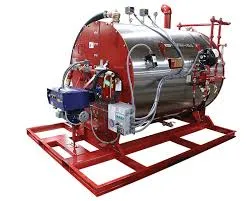
Oct . 31, 2024 05:31 Back to list
how to drain a steam boiler
How to Drain a Steam Boiler
Draining a steam boiler is a critical maintenance task that should be performed regularly to ensure optimal operation and longevity of the system. Whether you are preparing for maintenance, replacing components, or simply flushing out the system to remove impurities, understanding the correct procedure is essential. Below is a comprehensive guide on how to drain a steam boiler safely and efficiently.
1. Safety First
Before starting the draining process, safety should always be your top priority. Begin by turning off the boiler and allowing it to cool down. Steam boilers operate at high temperatures and pressure, making it crucial to wait until the system has safely depressurized and cooled to avoid burns or steam-related injuries. Additionally, ensure that you are wearing protective gear, including gloves and goggles, to safeguard against any accidental spills or releases of hot water or steam.
2. Gather Required Tools
To drain the boiler effectively, gather the necessary tools and equipment. This usually includes a bucket or hose to collect the water, a valve wrench, and possibly a garden hose if the valve is not directly accessible. Ensure that you also have a reliable source of water to refill the system after the draining process is complete.
3. Locate the Drain Valve
The drain valve is typically located at the lowest point of the steam boiler. Consult the manufacturer’s manual to accurately identify its location. It may be positioned on the side or bottom of the boiler and can be a simple ball valve or a more complex fixture.
4. Prepare to Drain
Before opening the drain valve, ensure that the surrounding area is clear and that you have your bucket or hose in place to catch the draining water. If you are using a hose, ensure that the other end is directed to an appropriate drainage area where water can freely flow away from the boiler.
how to drain a steam boiler

Using your valve wrench, carefully open the drain valve. If the valve has been closed for a long period, it may require some effort to loosen it. Turn it slowly to allow water to flow out steadily. Keep an eye on the pressure gauge; if any unexpected spike occurs, close the valve immediately.
6. Let the Water Drain
Allow the water to drain completely. This may take several minutes depending on the size of the boiler and the amount of water inside. If you notice any debris or sediment in the water, it is a good indication that a thorough cleaning may be needed.
7. Close the Drain Valve
Once the boiler is completely drained, close the drain valve carefully. Make sure it is tightly sealed to prevent any leaks when refilling the system.
8. Refill the Boiler
After draining, refill the boiler with fresh water according to the manufacturer’s specifications. This is essential to maintaining a healthy steam environment and preventing corrosion and scale buildup.
Conclusion
Draining a steam boiler is an essential maintenance procedure that helps ensure efficiency and longevity. By following these steps and prioritizing safety, you can perform this task effectively and prepare your boiler for optimal performance. Regular maintenance, including draining, is key to avoiding costly repairs and extending the life of your steam system.
-
Efficient Biomass Fired Hot Water Boiler | AI Heating Solution
NewsAug.01,2025
-
High-Efficiency Gas Thermal Oil Boilers | HPT Models
NewsJul.31,2025
-
Oil Fired Hot Water Boilers Sale - High Efficiency & Affordable
NewsJul.31,2025
-
High-Efficiency Commercial Oil Fired Steam Boiler for Industry
NewsJul.30,2025
-
High-Efficiency Biomass Fired Thermal Oil Boiler Solutions
NewsJul.30,2025
-
High Efficiency Gas Fired Thermal Oil Boiler for Industrial Heating
NewsJul.29,2025
Related PRODUCTS






















